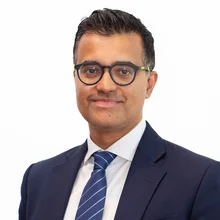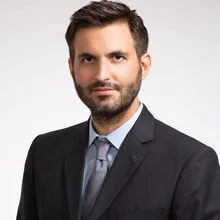
Derivatives house of the year, Asia: UBS
Asia Risk Awards 2024

UBS has been pursuing an ambitious strategy over the past three years. The bank is aiming to build beyond its core strengths in wealth management and – by developing its Asia-Pacific credit and fixed-income structured solutions businesses – go toe-to-toe with the big US houses on the street. Now, following last year’s acquisition of Credit Suisse, the stage is set for this ambition to be realised far more quickly than any of the bank’s executives previously imagined.
The merger of UBS AG and Credit Suisse AG on May 31, 2024 marked the latest major milestone in the integration journey that started with the acquisition in March 2023. Combining the two entities, a complex job involving multiple divisions, the migration of thousands of client positions and the transfer of hundreds of billions of dollars of assets under management, is expected to take place over several years with the bulk scheduled for completion in 2024. But early on in the integration process, UBS realised it can rapidly fill some important strategic gaps in its Asia-Pacific cross-asset offering.
“It became apparent quickly that there were a lot of complementarities [between the two firms],” says Thomas de Garidel, co-head of global markets, Asia-Pacific, at UBS. “When we mapped the UBS strategy with those complementarities from Credit Suisse, it was a great fit. What it effectively meant is we could accelerate our existing strategy and execute in a much shorter time frame.”
De Garidel says the complementary parts of UBS and Credit Suisse’s businesses in Apac were found across locations, products, talents and platforms.
The integration of Credit Suisse employees is visible on key senior positions. Former Credit Suisse executives who took on senior UBS roles include Emmanuel Triomphe as co-head of Apac unified global markets in Singapore, Ernest Ng as head of Apac equity derivatives trading and Naohiro Kuroda as co-head of global markets Japan.
Our ambition is always to be one of the top derivatives houses. In equities, we’re very much there
Thomas de Garidel, UBS
One example of complementary parts on the product side is Credit Suisse’s structured credit franchise. Structured credit was one of Credit Suisse’s biggest strengths in Apac as well as a notable missing piece for UBS. In 2013, UBS exited structured credit globally as part of a broader retreat from fixed income, a decision influenced by the introduction of the then nascent Basel III capital regime. In 2020, the bank decided to return, and towards that purpose merged its flagship equities business with its foreign exchange, rates and credit unit to form a single global markets team. With the integration of Credit Suisse, a wealth of new credit solutions expertise and experience has now been brought under that UBS global markets tent.
Another example, in the location bracket, is Japan, where Credit Suisse long had a market-leading franchise that UBS decided to leverage extensively off in terms of staff and platforms. Credit Suisse’s leading Cayman platform for structured funds, Credit Suisse Universal Trust, has been brought over and renamed UBS Universal Trust. A decision was also taken to onboard Boston Re, which is now a 100% UBS AG subsidiary providing bespoke reinsurance solutions to Japanese lifers.
The new capabilities in structured credit and the Japan market bolster what has long been the bank’s formidable franchises in equities and wealth management across Asia ex-Japan.
“Our ambition is always to be one of the top derivatives houses. In equities, we’re very much there. We’ve also been on a journey to grow our fixed-income solutions business, and the additions in the credit solutions area through integration with Credit Suisse are transformative,” says de Garidel.
Credit comeback
There’s an obvious challenge when it comes to integrating Credit Suisse’s credit franchise into UBS. Could the strengths and capabilities of that franchise be preserved while aligning with UBS’s more capital-light business model, what UBS chair Colm Kelleher last year described as the bank’s “more conservative risk culture”?
De Garidel believes the answer is yes. The integration process quickly led to a realisation amongst everyone involved that there was much more they could do in structured credit within the confines of the existing risk framework.
Data from the bank’s quarterly results shows that market risk has remained stable following the integration of Credit Suisse. The management value-at-risk (measured as one-day, 95% confidence, five years of historical data) came in at an average of 13 across the banking group in the second quarter of 2023. In the second quarter of 2024, the same figure was nine, excluding certain Credit Suisse components in the non-core and legacy transition portfolio.
“We want to develop capabilities and scale, but within the context of our capital-light model and within the risk appetite of the group,” says de Garidel. “We had successfully developed such capabilities over the years in the fixed-income solutions area, but still had some gaps in scale, breath of coverage or trading skillset, which the acquisition allowed us to bridge. It is also being key in the context of operating as one bank: having the full spectrum of solution capabilities in the investment bank is very relevant to wealth management.”
UBS’s ‘One Bank’ strategy dates back to 2020. With this initiative, the sales and structuring teams within wealth management and investment banking, was brought under a single ‘unified capital markets’ umbrella, while its equities business was merged with the foreign exchange, rates and credit units to form a unified global markets team. The objective was to bring the best of both the investment bank and the wealth management platform to clients, independent of client and product types.

Among clients the message that UBS is back in credit is beginning to get out. Early this year, the bank won trades with Korean clients in which it provided a skew facility monetising arbitrage opportunities between CDS indices and their single-name constituents. Monetising this default, risk-free arbitrage is done by selling protection on the indices while buying protection on the single names. It requires leverage and the trading resources to enter and exit trades quickly as opportunities arise. The Korean clients were able to outsource that execution risk to UBS through an OTC facility, in which UBS accepted Korean Treasury Bonds as collateral, thereby taking on some wrong way risk.
One Korean bank UBS traded this facility with had been a client of Credit Suisse whose trade was migrated over during the integration. Vallabh Shastri, head of structured credit and financing structuring, Asia ex-Japan at UBS, says the way client migration was handled opened the door for UBS to do more business with this client.
“We were able to migrate across a lot of the facilities that Credit Suisse has traded with the same clients,” he says. “The fact that we were migrating these trades and ensuring a seamless transition for each transaction done with Credit Suisse also made the client inclined to do more business with us, which we would have been in competition against Credit Suisse historically.”
UBS’s developing prowess in credit structuring has also been on show in recent financing transactions. One example is the provision of recourse financing through repo and total return swaps using UBS-issued capital return notes and bullet and callable credit-linked notes as collateral. Investors will usually struggle to find a bank willing to accept structured notes as collateral for financing because counterparties to such potential transactions lack visibility on the liquidity of the notes. Shastri says it is easier at UBS to get internal control functions comfortable with accepting such securities as collateral because they are UBS-issued and the financing and asset sides of the bank’s credit business operate as a single unit sharing a common reporting line.
“The biggest challenge with providing financing using structured notes as collateral is that you don’t always have visibility on the liquidity of notes. At UBS, however, the structuring team covers both financing and structured notes trading desks, so we are able to give transparency to our financing desk on the liquidity of UBS arranged structured notes, thereby enabling us to provide our clients with financing against such notes,” Shastri says.
The integration with Credit Suisse has also helped UBS to strengthen its trading offering on self-issued, long-dated zero-callable total loss-absorbing capacity (TLAC) bonds. The bank started trading its TLAC bonds back in 2019, and the securities proved to be popular with Taiwanese clients, especially insurance companies. This year, the bank acquired regulatory approval to issue TLAC-eligible senior unsecured bonds linked to constant maturity swap rates.
“This is interesting for clients who want to invest in floaters but linked to long-term rates and we have already successfully placed our first issuance under this,” says Gaurav Pugalia, head of macro structuring, Asia-Pacific, at UBS. “We have simultaneously broadened our offering beyond the initial adopters, both in respect of client segments and their geographies. Last but by no means least, the successful integration of Credit Suisse within UBS has further bolstered the UBS credit strength story, which is the key factor investors assess while analysing and investing in bank credit.”
While UBS’s capital light business model remains firmly in place, then, the bank’s growing capabilities in credit structuring are leaving the impression of a change of tack upon some clients.
“I feel their stance has been changing toward increasing risk appetite,” says an executive at one Korean bank client. “Previously, they were the most conservative bank from a credit risk perspective, however I feel they’re gradually getting competitive.”
A winning wealth platform
UBS has been the leading bank for wealth management solutions in Asia-Pacific for many years. But even in this space it has been far from business as usual since the acquisition of Credit Suisse.

“The big picture is, approximately $650 billion total invested assets were created by the combination of both UBS and Credit Suisse,” says Triomphe. “Some said it will give us more power to do more trades and get more business. But also, others would say that, well, you create complexity because you have more clients, more needs, so then you need to multiply the number of solutions as well.”
Once again, the bank has found aspects of the old Credit Suisse wealth business that complement rather than overlap with the UBS franchise’s existing strengths and capabilities. Credit Suisse, for example, had a slightly different client base from UBS, focusing on more bespoke solutions for ultra high-net-worth clients, whereas UBS has traditionally had more medium to low ultra-net-worth clients that execute simpler, more retail-like trades and solutions. The migration of those ultra high-net-worth clients from Credit Suisse is therefore helping UBS to establish a more complete client base.
A key component of UBS’s structured solutions for wealth clients in the Asia-Pacific region is its actively managed certificates, or AMC, business. This type of structured product, which represents a UBS-issued tracker certificate on an actively managed reference portfolio or index, has become increasingly popular with family offices and external asset managers in the Apac region in recent years.
UBS’s cross-asset platform Neo has long been regarded as the market leading solution for AMCs, allowing investors control over their portfolio of AMCs via a single point of access. But Credit Suisse’s equivalent platform, Quantum, did boast some capabilities lacking on Neo.
“Even on the Credit Suisse side, right before the acquisition, we knew the UBS Neo platform was the leader in the street; it’s immersion and saturation with the client base was unmatched,” says Romain Barba, co-head of structuring, Asia-Pacific at UBS. So, on the Credit Suisse side, when we were trying to compete with Quantum, we chose to go very deep on a couple of niche areas.”
One such area was look-through analytics, which allowed users to navigate through their AMC portfolio and understand on a granular level the different drivers of performance. By leveraging the experience of the same talents that helped develop Credit Suisse’s Quantum, UBS has now been able to upgrade the Neo platform with this functionality. Similarly, a Hong Kong Family Office holding an AMC on Credit Suisse’s platform could not be migrated to UBS on day one, since the UBS platform was missing capabilities that the client viewed as intrinsic to their strategy. In order to migrate the trade, UBS implemented several further platform enhancements – including FX-hedged benchmark Dynamic Strategies, removing the FX hedging burden from the end-clients – that are now available to all users.
Almost overnight then, the region’s leading platform for AMCs just got even better. Similar enhancements that leverage Credit Suisse’s platform infrastructure have also been made on Aspire, UBS’s multi-asset class platform that supports its Quantitative Investment Strategy business.
“This is a classic example of the complementary nature of the two companies,” says de Garidel. “Right now, we are leveraging the talents and experience we’re bring across from Credit Suisse and replicating that here.”
Only users who have a paid subscription or are part of a corporate subscription are able to print or copy content.
To access these options, along with all other subscription benefits, please contact info@risk.net or view our subscription options here: http://subscriptions.risk.net/subscribe
You are currently unable to print this content. Please contact info@risk.net to find out more.
You are currently unable to copy this content. Please contact info@risk.net to find out more.
Copyright Infopro Digital Limited. All rights reserved.
As outlined in our terms and conditions, https://www.infopro-digital.com/terms-and-conditions/subscriptions/ (point 2.4), printing is limited to a single copy.
If you would like to purchase additional rights please email info@risk.net
Copyright Infopro Digital Limited. All rights reserved.
You may share this content using our article tools. As outlined in our terms and conditions, https://www.infopro-digital.com/terms-and-conditions/subscriptions/ (clause 2.4), an Authorised User may only make one copy of the materials for their own personal use. You must also comply with the restrictions in clause 2.5.
If you would like to purchase additional rights please email info@risk.net
More on Awards
Clearing house of the year: LCH
Risk Awards 2025: LCH outshines rivals in its commitment to innovation and co-operation with clearing members
Best use of machine learning/AI: CompatibL
CompatibL’s groundbreaking use of LLMs for automated trade entry earned the Best use of machine learning/AI award at the 2025 Risk Markets Technology Awards, redefining speed and reliability in what-if analytics
Markets Technology Awards 2025 winners’ review
Vendors jockeying for position in this year’s MTAs, as banks and regulators take aim at counterparty blind spots
Equity derivatives house of the year: Bank of America
Risk Awards 2025: Bank gains plaudits – and profits – with enhanced product range, including new variants of short-vol structures and equity dispersion
Law firm of the year: Linklaters
Risk Awards 2025: Law firm’s work helped buttress markets for credit derivatives, clearing and digital assets
Derivatives house of the year: UBS
Risk Awards 2025: Mega-merger expected to add $1 billion to markets revenues, via 30 integration projects
Interest rate derivatives house of the year: JP Morgan
Risk Awards 2025: Steepener hedges and Spire novations helped clients navigate shifting rates regime
Currency derivatives house of the year: UBS
Risk Awards 2025: Access to wealth management client base helped Swiss bank to recycle volatility and provide accurate pricing for a range of FX structures







